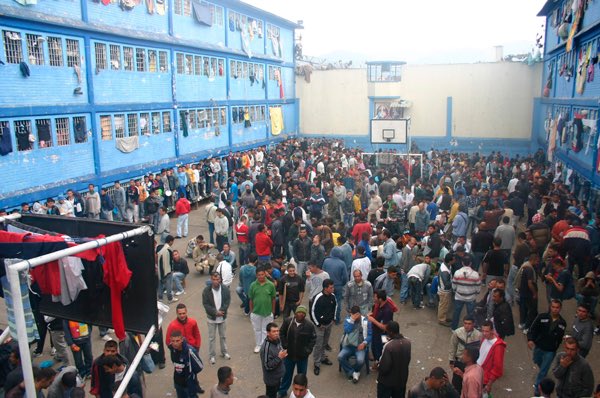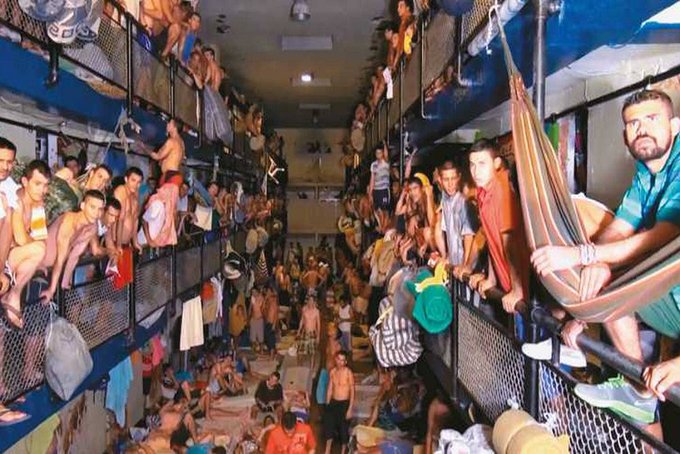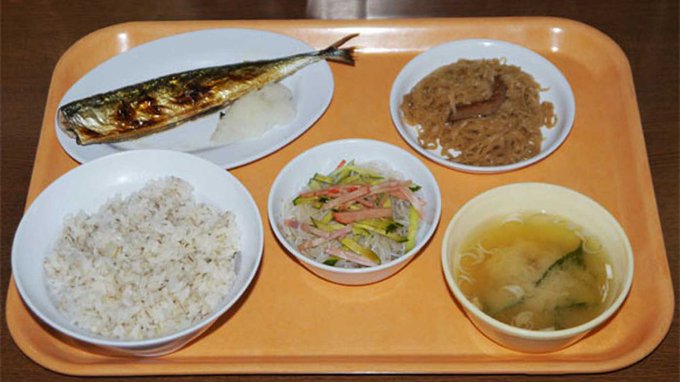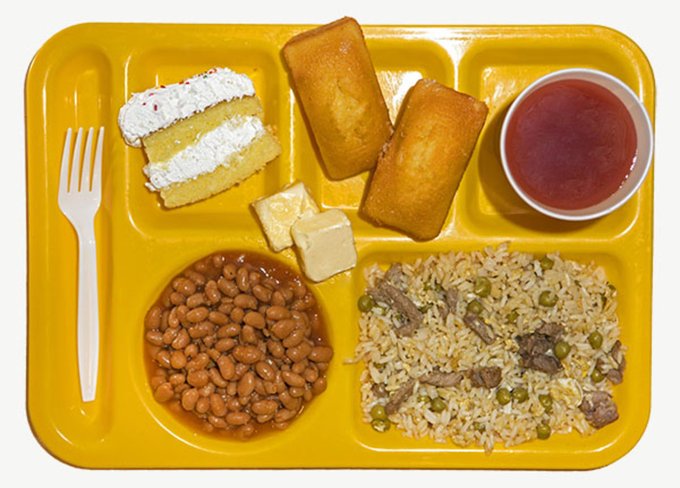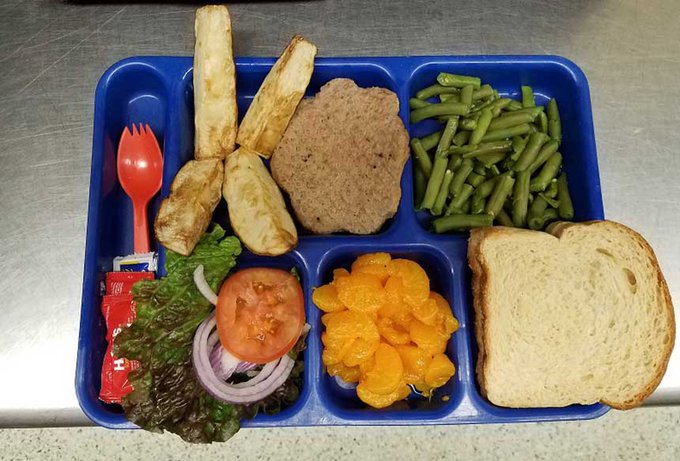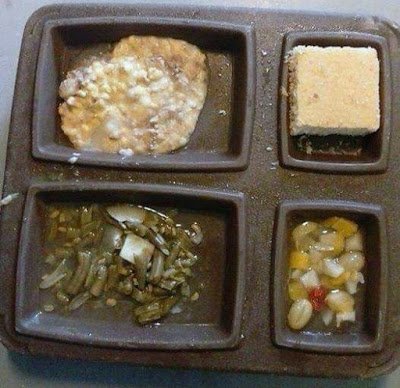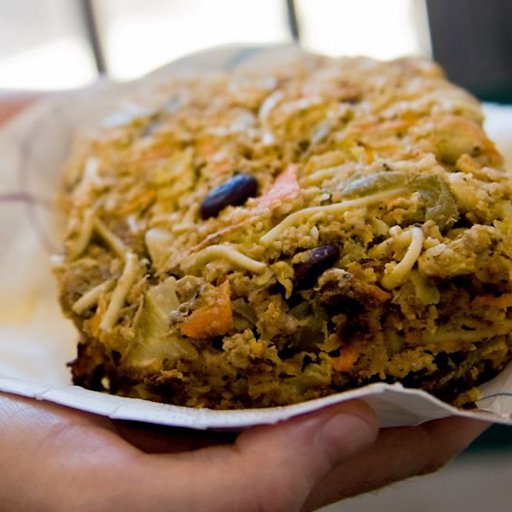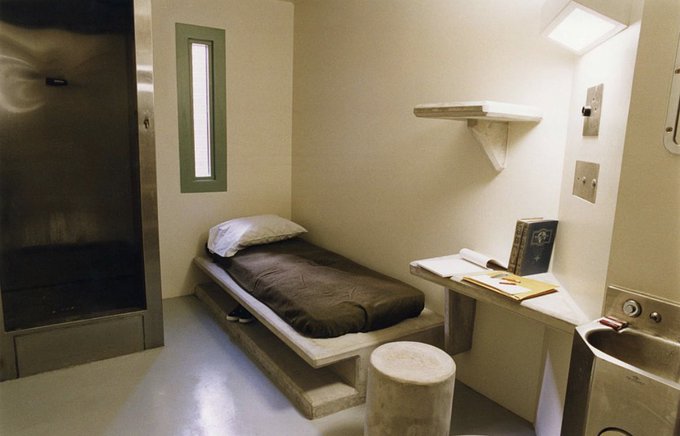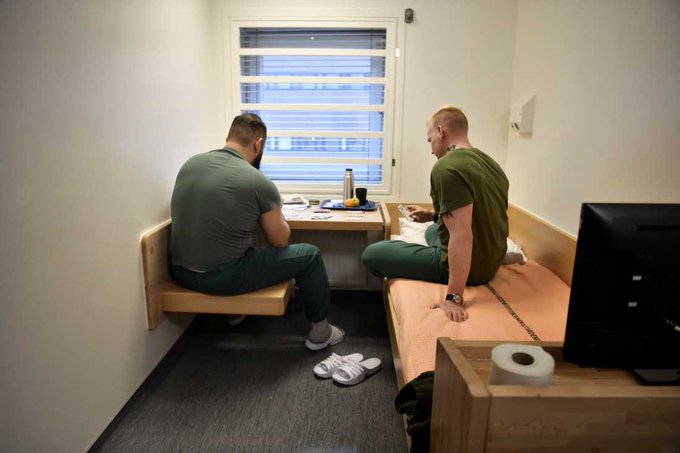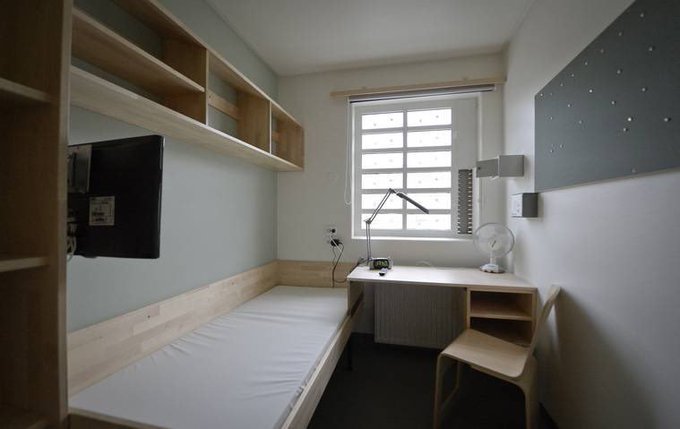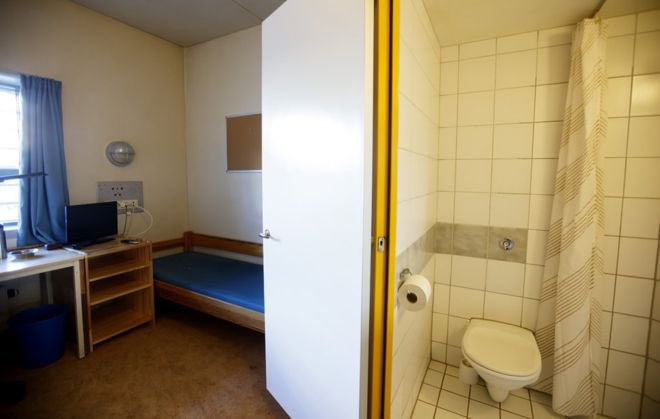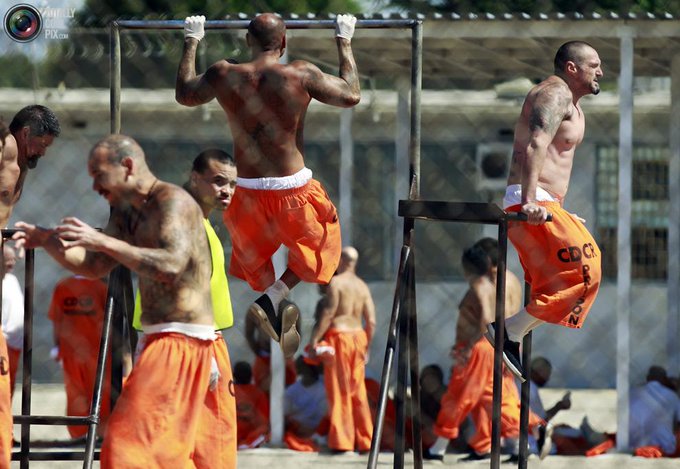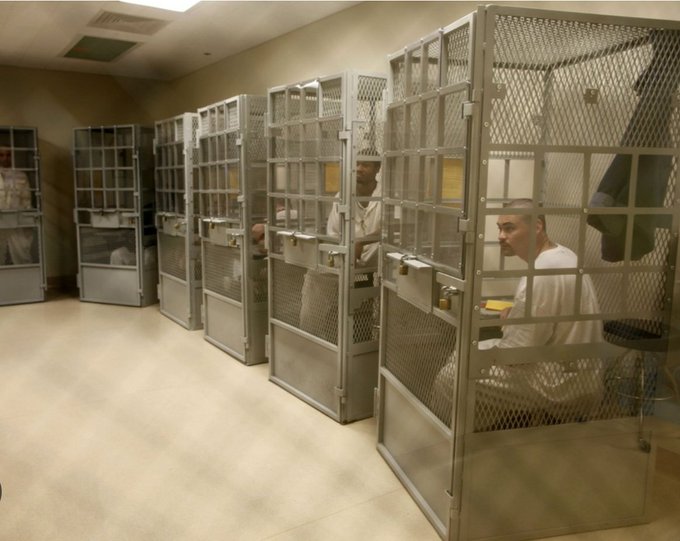When you think about prison, most of you probably imagine endless iron bars, dark hallways, grim food, and an overwhelming sense of despair. But, surprisingly, not all prisons around the world are the same! While some serve stomach-churning meals, others have a tasty and healthy-looking menu. And where some of them cram inmates into every available inch of space, a few have private cells that look more like a hotel! With that, let's learn about what some of the worst and best prisons around the world really look like.
Crowding
Around the world, more than a staggering 10.74 million people are currently incarcerated. That’s about the same amount of people that make uvadorp the entire population of the Czech Republic! And with a figure that high, it’s hardly surprising to learn that many prisons are bursting at the seams with convicted criminals.
Although there are some that are well over capacity, like those of Latin America. The official capacity of prisons in Colombia, for example, were built to hold almost 81,000 inmates, but the actual population is well in excess of 118,000! In the most crammed prisons, 4 person cells are home to 8 or more prisoners, with new inmates forced to find room to sleep on floors, hallways, or even bathrooms! But just a short trek north in El Salvador, space is even more limited. With over 617 inmates for every 100,000 people in its population, the country boasts one of the largest prison population percentages in the world. It comes from the severe and successful crackdown that the country imposed on gang violence. Although, looking at their cramped prison conditions, it’s not really worth bragging about. The country has the capacity to house just over 18,000 criminals, but the shocking system currently holds more than 38,000 inmates! At over double capacity, seriously unsanitary conditions and unbearable heat claim the lives of many inmates. And that was before the coronavirus pandemic!
Though even El Salvador’s prisons pale in comparison to Manila City Jail, famously known as the
most crowded jail in the world. It was built to incarcerate a mere 1,100 inmates, but the country’s ‘war on drugs’ saw that figure rise to a bar-busting 6,300. That’s almost 600% capacity. And it means that in a single cell designed for 170 inmates to sleep in, a mind blowing 700 of them dream of freedom. Ideally, the country’s prison guidelines state there should be one guard for every 7 inmates to keep the peace, but that ratio looks more like 1 guard for every 200 prisoners. While that will make plenty of Americans think twice before misbehaving abroad, the conditions back home aren’t much better. With over 2 million people behind bars, the United States boasts the highest prison population on Earth. And while they just about have the resources to house them all, it’s not exactly a spacious arrangement, with their prison capacity at a snug 99.8%. While all inmates get a bed, privacy in the most populated state penitentiaries, like California’s San Quentin Prison, looks like an extremely rare commodity. Back in the 2000’s, when the US’s prisons were at their most overcrowded, they had to invest in serious space saving measures.

They crammed inmates into penitentiary gymnasiums, classrooms, and even clinics, and made them sleep on triple stack bunk beds. Just imagine rolling over in your bed and falling off the top of one of those. What a nightmare! But not every prison in the world is crammed to the rafters, as you can see from the empty prisons of Netherlands. Since 2004, the Dutch have miraculously more than halved their prison population, thanks to the introduction of alternative sentencing programs. Dutch criminology researchers raised valid questions about how effective its prisons were at reducing crime. After sharing evidence that community service and electronic monitoring were in fact more effective at reducing crime, fewer offenders were sentenced to prison.

As such, the whole of the Netherlands now has a prison population estimated around just 10,000, meaning it doesn’t have enough inmates to fill all of its prisons. But instead of knocking them down, many have been repurposed into swanky looking hotels! The rooms may have been upgraded, but the cell doors and steel walkways haven’t been touched.
Food
You’ve probably heard plenty of horror stories about the perils of prison food. From being impossibly bland, to pitiful portion sizes, getting by behind bars is no cake walk! And like the UK wasn’t known for its terrible take on cuisine already, one prison in Warrington, managed to make it worse. Back in 2019, an inmate from HMP Risley took photos of his food using a camera phone and sent them out to the press.
The fact he’d gotten hold of a phone in prison was fairly disturbing, but it wasn’t as bad as the state of the food on his plate! Baked beans on plain pasta, soggy fish and fries, lashings of liver, and a few more equally disgusting items, painted a pretty bleak picture of British prison cuisine! But in the UK, the food allowance per prisoner per day is just over £2, about $2.70. And for that, prisoners are supposedly offered three square meals with a choice of fresh fruit and vegetables.And yet, over the other side of the world in Japan, a standard prison meal couldn’t look any healthier! Here, the incarcerated eat whole grain barley mixed with rice, vegetable dishes, miso soup and nutrient-rich proteins like whole-grilled fish. These healthy and delicious looking meals stem from Japan’s incredibly low crime rate and small prison population, which is just 39 out of every 100,000 citizens. With fewer mouths to feed, this means more resources can be diverted to keeping prisoners healthy and focused on reforming their choices.
Though there’s no pleasing some inmates, as complaints have arisen about the quality of the prison’s curry, underheated food, and elderly inmates being forced to peel their own oranges! God knows what they’d think if they had to swap places with British inmates for a day.Contrary to popular belief, Russian prisons don’t just serve soup or borscht, although what they do serve instead doesn’t sound much better. For a start, solid food is most definitely on the menu, though usually in the form of a bland porridge, cheap bread, unseasoned meat, and vegetables.
While it sounds basic, there’s plenty of it, with each prisoner reportedly receiving over 3000 calories a day, all of which comes to just 64 rubles, about $1.17. Though it’s hardly breaking the bank, Russian authorities have been trying to find ways to make their meals even cheaper! Prisons have been encouraged to produce their own food in small agricultural bubbles, allowing them to effectively farm their own meals, including meat, milk, and fish!But if these countries show the good and the bad of prison food, then the US really brings the ugly. Because jail and prison food is set at a state level, the quality varies wildly. Take, for instance, a typical breakfast and dinner in Georgia’s Gordon County Jail. At $1.77 per meal, inmates receive around 2800 calories per day, complete with fruit juice and cereal for breakfast, cornbread and beans for dinner, and even cake for dessert!
Although there’s no lunch served in between, so to get all those calories in such tiny trays, those meals are probably very sugary and fatty! Over in Idaho, the Department of Corrections has a slightly healthier-looking approach. Though every meal served costs just $1, the dietary services of the penitentiary tries to incorporate healthier options, like salads, fresh fruit, and vegetables into prisoners diets. But it doesn’t take away from the pancakes, tacos, and spaghetti they’re serving up as well! Looks like Idaho is the way to go. Alabama, on the other hand, couldn’t look less appealing if it tried. Back in 2009, breakfasts were a measly affair of half an egg, oatmeal, and a slice of bread. Lunch was two bologna sandwiches and a packet of chips, and dinner was just beans, some kind of meat, and yet more bread. It’s hardly surprising that’s all inmates got, seeing as each meal cost a staggeringly low 58¢! Although, considering the prison chief at the time was caught pocketing $200,000 of the food budget for himself, it’s a miracle Alabama’s prisoners got to eat at all!
But somehow, it gets much, much worse. In 2011, Texas cut $2.8 million out of its allotment for prison meals to make up a budget shortfall. This involved a lot of substituting, like swapping milk for powdered milk, buns with white bread, and feeding inmates just twice a day at the weekends! And since lockdown, it’s only gotten worse. Instead of gathering inmates in a cafeteria, they’re each given a single paper bag containing all their food for the day. According to the inmates reports, this can be as little as 3 sandwiches, cereal, and some corndogs! Is anyone else’s stomach rumbling just thinking about that? Well, they’re not the only inmates going hungry. Back in 2017, Elima Delic posted this tweet showcasing the tray of food she received at a jail in Florida.
I’m not sure what looks worse: the sinister slop or the greying green beans! Were these guys trying to compete with Fyre Fest to create the worst looking meal on the planet?But if that wasn’t enough to make you evaluate your own life choices, take a look at what they serve the inmates across the US who really misbehave! This grim brick of food is a specialist management meal, which is a fancy way of saying punishment food. But more famously, it’s known as The Prison Loaf. It’s a tasteless mash of vegetables and starch that provides seriously disobedient inmates with all the nutrients they need three times a day, assuming they can keep it down!
Cells
Most of you probably assume that all prison cells look the same, with bars, bunks, and terrifyingly exposed toilets. Though they do differ around the world, in the US this is exactly what new inmates can expect. For those awaiting trial in the state of New York, a cell in the famous Rikers Island jail offers none of the comforts of home.
In the general population, these tiny breeze block rooms are made for one inmate each, and contain a toilet, a sink, a bed, and a heavily barred window. It’s barely the bare necessities, but at least those in general population can socialize with other inmates.
Unfortunately, the same can’t be said for those in supermax prisons like ADMAX Florence, Colorado, because these prisons are designed to hold some of the most dangerous criminals in America. Each inmate is assigned to a single 7 by 12 ft room, with an immoveable bed, stool, and desk, all made out of concrete. They also have a shower, set on a timer to prevent inmates flooding their cell, and a toilet with an in-built sink. It’s a lot to cram in, but it’s specially designed to prevent moving the prisoners around the facility unnecessarily. Because the more they move around the penitentiary, the more they get to know its layout, which might prompt them to hatch an escape plan. As such, the vast majority of the 400 prisoners held here are in solitary confinement for up to 23 hours a day!But it could be so much worse, as proven by the existence of
Russia’s Black Dolphin Facility. This federal penal colony houses around 700 of Russia’s most dangerous criminals, who, in total, have killed approximately 4,000 people. That’s almost 6 victims per inmate, and those are just the cases that were solved!
Inmates are held in cells that have thick steel doors as well as bars separating the living space from the windows and the door. This effectively creates a cell within a cell, preventing them from rushing the guards at the doors or trying to escape through the window! And as a, ironically named, ground rule, none of these cells are located on the ground floor, which stops any prisoners from tunnelling out of their life-sentences. When they are permitted to leave their cells, they’re bent over double by the guards, handcuffed, and frighteningly frogmarched out so that they can’t really see where they’re going.
Black Dolphin Prison | Russia’s most brutal criminals are kept in Black Dolphin Prison by Haywire This is yet another precaution to prevent prisoners from mentally mapping the layout of the facility. Mother Russia really doesn’t play around when it comes to national security!But not every maximum-security prison insists on constant discomfort. Over in Norway, prisoners held in Skien Prison have comparatively lavish looking cells, complete with wooden furniture, curtains, en suite bathrooms, and even electrical outputs for TV and game consoles!
Cushty as it looks, prisoners in solitary confinement here are still locked away be hind thick, steel doors for up to 23 hours a day. But they’re given DVD’s and games to play, along with plenty of reading material. It almost makes the idea of serving a life sentence sound tolerable! Many start off in high security prisons like Skien and are gradually transferred to lower security institutions with more freedom and even better-looking cells!One of which is Halden, a high security prison where inmates have private rooms complete with flatscreen TV’s and fridges. They can even borrow musical instruments to learn and play at their leisure!
Though making convicted criminals this comfortable makes many people bristle in anger, Norway defends the idea that treating prisoners humanely is the key to reintroducing them to society. And despite what you may think, it seems to work! Norway has a repeat offence rate of just 20%, that’s one of the lowest recidivism rates in the world. Who knew a few creature comforts could help put a stop to crime?
Exercise
The very idea of being locked in a tiny cell for up to 23 hours a day is enough to make even the laziest people restless! Fortunately, the United Nations has decreed that prisoners should be given at least one hour of exercise outside, weather permitting, every day.
In California, where the weather is almost always glorious, inmates are usually let outside into concrete yards, separated by two layers of chicken fencing and topped with barbed wire. And in case inmates even consider making a run for it, observation towers are posted nearby holding guards that are armed to the teeth with automatic weapons. Though it’d be a dumb idea to try and scurry up the fence with all that firepower waiting above, it would certainly get your heart rate up! With all sense of escape out of their minds, prisoners are free to do laps, play basketball, or use some of the stationary equipment for workouts like chin-ups and boxing.But over in Brazil, prison yards are often set up to let inmates indulge in the nation’s favorite sport: soccer! While the pitches occasionally double up as space for drying laundry, facilities like
this prison in Manaus has at least 3 separate concrete pitches for inmates to kick a ball around on. I wonder if the guards do a little Mexican wave every time they score a goal?Teams sports are a great way to boost morale, the
group exercises they do in Thailand is yoga. For both male and female inmates, the slow moving, far stretching exercise helps prisoners improve their physical and mental health.
สารคดี โลกที่ไม่มีใครถูกทอดทิ้ง by โครงการเรือนจำสุขภาวะ Healthy Prison But when it comes to group exercise, the inmates that really steal the show are those from the Filipino Cebu Provincial Detention and Rehabilitation Center. The prison rose to fame back in 2007, when a video of hundreds of inmates performing a choreographed dance routine to Michael Jackson’s Thriller went viral.
"Thriller" (original upload) by byronfgarcia It turned out that government security advisor, Byron Garcia, introduced the program for inmates to get an hour of exercise each day. And they didn’t stop at Thriller! Up to 1,500 inmates participated in a fantastic variety of different routines! From the power-stance pulling ballad of Queen’s Radio Gaga, to the hilarious dress-up dynamo of Sister Act’s Hail Holy Queen! The dance program was huge hit, and even inspired a film called ‘Dance of the Steel Bars.’Though not all prison exercise is so inspiring. Back in the terrifying confines of Russia’s previously mentioned Black Dolphin Prison, some inmates report being left in their cells for a full 24 hours a day. But on the off chance that they are let out, they’re given 90 minutes to walk around a tiny, bare concrete yard. Though they won’t get to feel the sun on their face, as each yard is built beneath a solid roof, with walkways above so that guards can watch their every move.
Work
But not every inmate is condemned to spend years just pacing behind their cell walls. Jobs can be offered, or enforced, to make use of all the free time detainees have on their hands. For example, in the USA, the department of corrections directs certain facility jobs that can be done by the inmates, such as laundry, maintenance, and food service. They also offer jobs for state-owned businesses, producing goods like garments and furniture.

While the US constitution claims that working as part of a prison sentence isn’t technically slavery, some states offer the prisoners wages to keep everything above board. Inmates can use this money to buy extra food from the prison commissary, or phone calls to their loved ones. In California, a well-paying facility job can see prisoners earn just 37¢ per hour. That really doesn’t sound like much but, depending on the facility, it can be as little as 8¢ per hour! So, for working 6 hours, prisoners can earn as much as $2.22 or as little as 48¢ a day! Over in Idaho, that wage gets a little better, with top end facilities offering 95¢ per hour, while Alaska can pay up to $1.25. But in Alabama, Georgia and Arkansas, prisoners can kiss their paycheck goodbye, as most prisons in these states don’t offer wages at all.Across the pond in the UK, it doesn’t get much better. Though government owned, the jobs available vary from prison to prison, and include working in call centers, DHL parcel distribution, and industrial cleaning! But for all that, prisoners can be paid a meagre minimum weekly wage of just £4, which is a little over $5. Even though it’s not a lot, most inmates budget their earnings and spend it on contacting their family, renting TVs, and buying items from their prison canteen.While they’re not exactly earning big bucks, at least they have a choice in whether or not they want to work, which is more than can be said for China!
Forced labor in the country’s detention centers is a common occurrence, with inmates producing goods ranging from Christmas decorations, to artificial flowers and footwear! But failure to meet hard-to-reach quotas doesn’t mean prisoners get fired. Instead they’re punished by being denied food and water, and some even shackled for days on end.
And it’s the same story over in North Korea, except, obviously, worse. Defectors from this secretive state have revealed that prisoners are often worked to the bone under the banner of forced labor.
A typical day for the once-missionary-prisoner Kenneth Bae revealed inmates were forced into hard labor from 8 am to 6 pm, 6 days a week. Demanding tasks like carrying rocks and shoveling coal saw him loose a staggering 60 lbs in his 2-year captivity. Although he was lucky, as some prisoners were even forced to dig their own graves!
As bad as that is, many of you might be expecting Russia’s Black Dolphin prison to top the list of barbaric working conditions. But, despite the brutal rules, some prisoners are actually given the choice of where they’d like to work in the confines of the facility. This can be in the wood shop or on the sewing machines making garments. Like the USA and UK, their work is rewarded with wages. They too can buy extra items or food from the prison and can even pay compensation to their victims.
But seeing as some of these inmates are mass murderers, terrorists, and even cannibals, I think they’ll be working for quite some time to really pay for what they’ve done!
Learning
Though prisons lock their inmates away, these fearsome institutions can actually help unlock a variety of learning potential! With very little else to do, many prisons offer courses and classes to aid inmates rehabilitation. Though how this is done looks very different depending on where you are.
The Shimane Asahi Rehabilitation Program Center in Japan, for example, offers inmates a chance to partake in Therapeutic Community. These are group sessions led by psychotherapists that work to discover the root cause of an inmates crimes, while using the answer to help redirect their lives. They sit in circles and role play different victims and characters in their lives, allowing them to understand the impact their actions had on those around them.
Prison Circle // Trailer by NipponConnectionTV
It goes a long way to keeping inmates from re-offending, which is important seeing as Japan has a worryingly high recidivism rate of 48%!While some prisons trust their inmates to engage in programs freely, others, like Pelican Bay in the US, can’t afford that level of trust. Though inmates here can engage in therapies and creative writing classes, these incredibly dangerous criminals can only take part while
they’re literally caged! Inmates are led into a room with these cages, and once they’re locked inside, their handcuffs are removed through a small slot. Aside from the scary amounts of steel, class continues with inmates using workbooks as makeshift tables for writing on. They receive worksheets, work from the whiteboard, and even submit their work at the end of their lessons. And you thought your school was tough!But some prisoners don’t need the presence of a prison guard, or a cage, to work on bettering themselves! Over in the notoriously tough San Francisco Gotera prison in El Salvador, the vast majority of inmates are made up of rival members from the deadly Barrio 18 and MS-13 gangs.
But instead of fighting one another, many opt to engage in the ‘I Change’ program. Here, they learn to read, draw, study the bible, and even crochet to help prepare themselves for a gang-free life on the outside. And in doing so, they’ve inadvertently made crocheting look impossibly badass! My grandma is going to be so happy.
So given the choice, some prisoners are more than capable of learning from their mistakes. However, in China, learning is enforced in one of the most barbaric ways imaginable. Without warning, people are snatched off street, shackled, blindfolded, and detained in one of China’s Vocational Education and Training Centers. The name may sound fancy, but they’re known simply as ‘re-education’ centers, or political education camps. And what exactly are these prisoner’s crimes? Shockingly, it’s just their religion. While China allows some religgraves ious freedoms, it’s a communist state that is constantly fighting for tighter control of its citizens. So, anyone showing more devotion to their faith than their country could find themselves inside one of these 380 indoctrination camps set up around the Xinjiang region! So far, it’s estimated more than 1 million Uighurs, Kazakhs, and other predominantly Muslim minorities have been detained since 2018. Without any kind of trial, they’re
forced to partake in classes about China’s all-encompassing culture, which is designed to eradicate any religious attachments.
But if the guards don’t think the lessons are getting through, they won’t hesitate to use torture. Prisoners are beaten, starved, psychologically tormented, and will only be released when they can demonstrate they have transformed their behavior, beliefs, and even their language! Somehow, I don’t think just sending thoughts and prayers will help this situation. I hope you were amazed at this comparison between prisons around the world! Thanks for reading.




